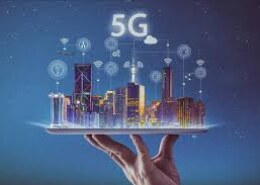The evolution of communication technologies has been a defining force in shaping our interconnected world, and the advent of 5G represents a pivotal milestone. As the fifth generation of mobile network technology, 5G brings a host of advancements that significantly impact how we communicate and connect. Let’s delve into the key impacts of 5G technology on communication.
1. Higher Data Speeds:
One of the most noticeable improvements with 5G is the remarkable increase in data speeds. This translates to faster downloads, quicker uploads, and seamless streaming experiences. Whether it’s downloading large files, streaming high-definition content, or engaging in bandwidth-intensive activities, 5G’s higher data speeds redefine the pace of communication.
2. Low Latency:
Reduced latency is a game-changer for applications that demand real-time interaction. 5G minimizes delays in data transmission, making activities like video calls and online gaming incredibly responsive. The near-instantaneous communication enabled by low latency enhances user experiences across various platforms.
3. Increased Network Capacity:
The surge in connected devices and the growing demand for data-intensive applications necessitate a network that can handle increased capacity. 5G rises to the challenge by supporting a higher number of devices concurrently. This increased network capacity ensures a seamless and reliable communication experience, even in densely populated areas.
4. Enhanced Connectivity:
5G’s improved coverage and reliability contribute to enhanced connectivity. Whether you’re in a bustling city center or a remote location, the reach of 5G networks ensures consistent and reliable communication. This aspect is particularly crucial as our reliance on constant connectivity continues to grow.
5. IoT Expansion:
The Internet of Things (IoT) has seen rapid growth, and 5G plays a pivotal role in expanding its reach. The technology’s ability to handle a massive number of connected devices facilitates the seamless communication of IoT devices. This, in turn, opens up possibilities for smart homes, cities, and industries, fostering a more interconnected world.
6. Advanced Technologies:
5G isn’t just about faster data speeds; it’s a catalyst for advanced technologies. Augmented Reality (AR) and Virtual Reality (VR) experiences are significantly enhanced, offering users more immersive and interactive communication possibilities. This opens new doors for applications in gaming, education, and various industries.
7. Economic Impact:
Beyond personal convenience, the deployment of 5G carries substantial economic implications. It fosters innovation, creates new business models, and supports industries such as healthcare, manufacturing, and autonomous vehicles. The economic ripple effect of 5G is poised to stimulate growth and reshape industries.
8. Efficient Communication Networks:
5G optimizes the use of spectrum resources, leading to more efficient communication networks. This efficiency not only improves overall network performance but also allows for a smarter allocation of resources, contributing to a more sustainable and resilient communication infrastructure.
In conclusion, 5G technology is revolutionizing communication on multiple fronts. From faster data speeds to enabling advanced technologies, the impacts of 5G are reshaping the way we connect and communicate. As 5G networks continue to expand globally, the full extent of its transformative influence on communication is yet to be fully realized. The future promises a more connected, responsive, and technologically advanced society, driven by the power of 5G.

